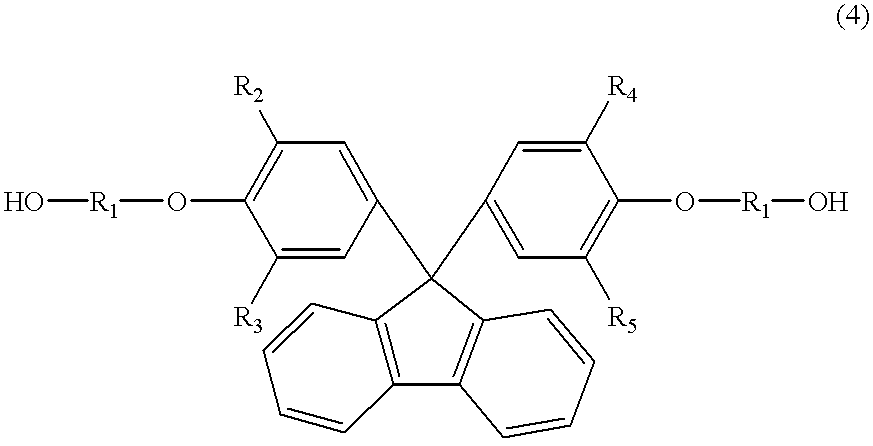Near infrared absorbing film, and multi-layered panel comprising the film
a technology of infrared absorbing film and film, which is applied in the direction of auxillary/base layers of photosensitive materials, instruments, photosensitive materials, etc., can solve the problems of high manufacturing cost of such glass filters containing metal deposit films, difficult to handle, and difficult to manufactur
- Summary
- Abstract
- Description
- Claims
- Application Information
AI Technical Summary
Problems solved by technology
Method used
Image
Examples
example 2
Using an epoxy adhesive, the film formed in Example 1 was sandwiched between polymethyl methacrylate substrates of about 1 mm thick, of which one surface was laminated with a film of about 100 .mu.m thick that had been prepared by depositing a near-infrared-absorbing and electromagnetic radiation-absorbing layer of silver complex [ITO / (silver+platinum) / ITO--this indicates a structure of (silver+platinum) as sandwiched between ITO (indium tin oxide)] on a transparent polyester. Thus, a near-infrared-absorbing panel having the structure of FIG. 1-A was produced, and its characteristics were evaluated. The spectral transmittance curve of this panel is shown in FIG. 2. The near-infrared cut-off percentage of this panel was 97%, and the visible ray transmittance thereof was 70%. The panel was good.
example 3
In the same manner as in Example 1 except that triacetyl cellulose (LT-35, manufactured by Daicel Chemical) was used as the casting polymer, a near-infrared-absorbing panel having the structure of FIG. 1-A was produced, and its characteristics were evaluated. The near-infrared cut-off percentage of this panel was 97%, and the visible ray transmittance thereof was 70%. The panel was good.
example 4
0.005% by weight of nickel bis-1,2-diphenyl-1,2-ethene-dithiolate, 0.001% by weight of phthalocyanine dye (EX Color 801K, manufactured by Nippon Shokubai), and 0.001% by weight of phthalocyanine dye (EX Color 802K, manufactured by Nippon Shokubai) were dispersed in polymethyl methacrylate, and sheeted into a film having a thickness of about 2 mm through melt extrusion.
One surface of this film was laminated with a film (thickness: 100 .mu.m) that had been prepared by depositing a near-infrared-absorbing and electromagnetic radiation-absorbing layer of silver complex [ITO / (silver+platinum) / ITO] on a transparent polyester. Thus, a near-infrared-absorbing panel having the structure of FIG. 1-C was produced, and its characteristics were evaluated. The near-infrared cut-off percentage of this panel was 97%, and the visible ray transmittance thereof was 65%. The panel was good.
PUM
| Property | Measurement | Unit |
|---|---|---|
| Transmittivity | aaaaa | aaaaa |
| Transmittivity | aaaaa | aaaaa |
| Color | aaaaa | aaaaa |
Abstract
Description
Claims
Application Information
 Login to View More
Login to View More - R&D
- Intellectual Property
- Life Sciences
- Materials
- Tech Scout
- Unparalleled Data Quality
- Higher Quality Content
- 60% Fewer Hallucinations
Browse by: Latest US Patents, China's latest patents, Technical Efficacy Thesaurus, Application Domain, Technology Topic, Popular Technical Reports.
© 2025 PatSnap. All rights reserved.Legal|Privacy policy|Modern Slavery Act Transparency Statement|Sitemap|About US| Contact US: help@patsnap.com



